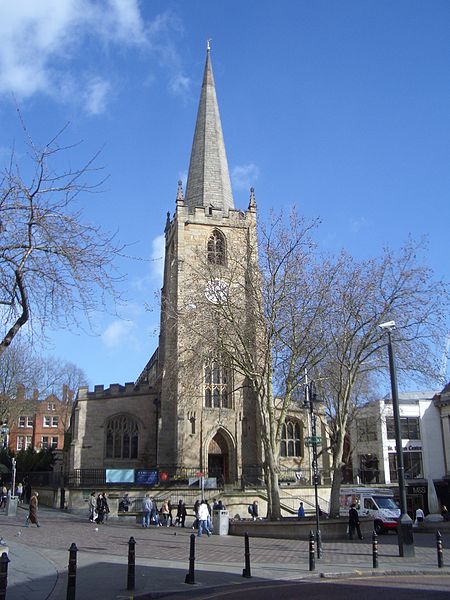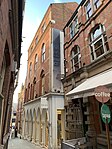St Peter's Church, Nottingham
Church of England church buildings in NottinghamshireChurches in NottinghamGrade I listed churches in NottinghamshireUse British English from March 2013

St Peter's Church, formally The Church of St Peter with St James, is an Anglican parish church in the city centre of Nottingham, England. It is part of the parish of All Saints', St Mary's and St Peter's, Nottingham. The church is Grade I listed by the Department for Culture, Media and Sport as a building of outstanding architectural or historic interest.
Excerpt from the Wikipedia article St Peter's Church, Nottingham (License: CC BY-SA 3.0, Authors, Images).St Peter's Church, Nottingham
St. Peter's Square, Nottingham The Meadows
Geographical coordinates (GPS) Address Nearby Places Show on map
Geographical coordinates (GPS)
| Latitude | Longitude |
|---|---|
| N 52.952222222222 ° | E -1.1486111111111 ° |
Address
St Peter's Churchyard
St. Peter's Square
NG1 2JR Nottingham, The Meadows
England, United Kingdom
Open on Google Maps










